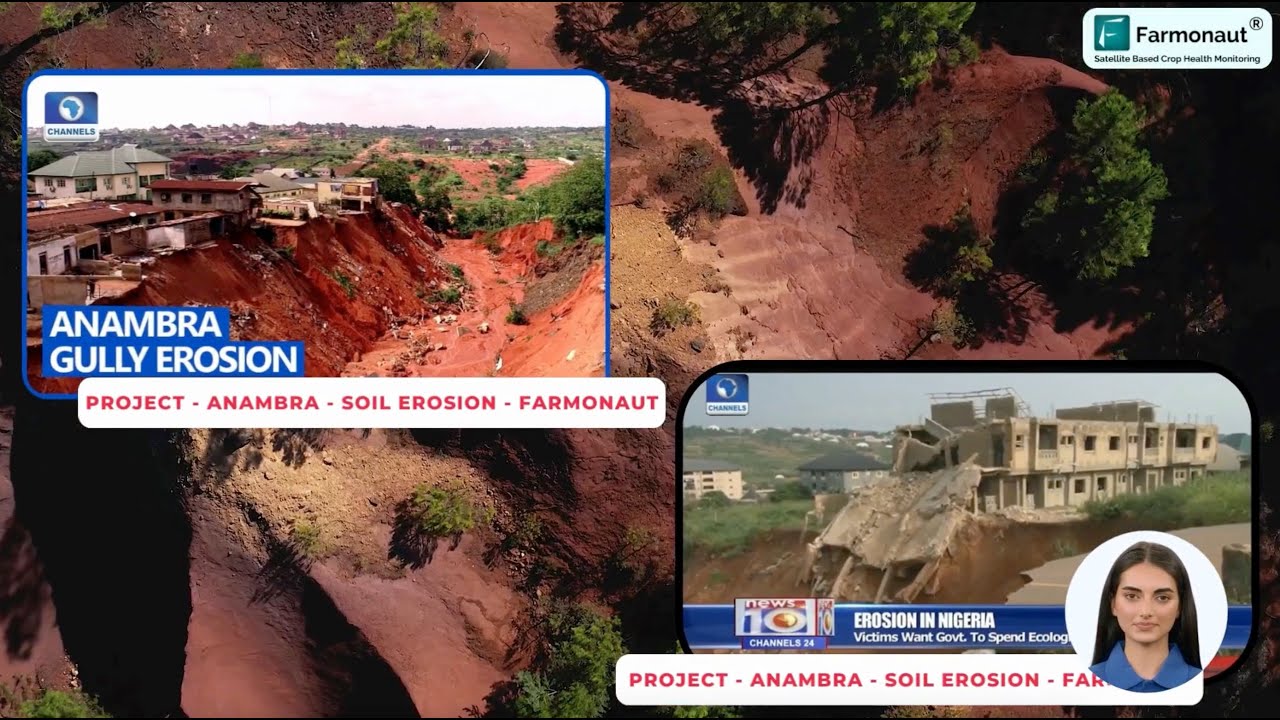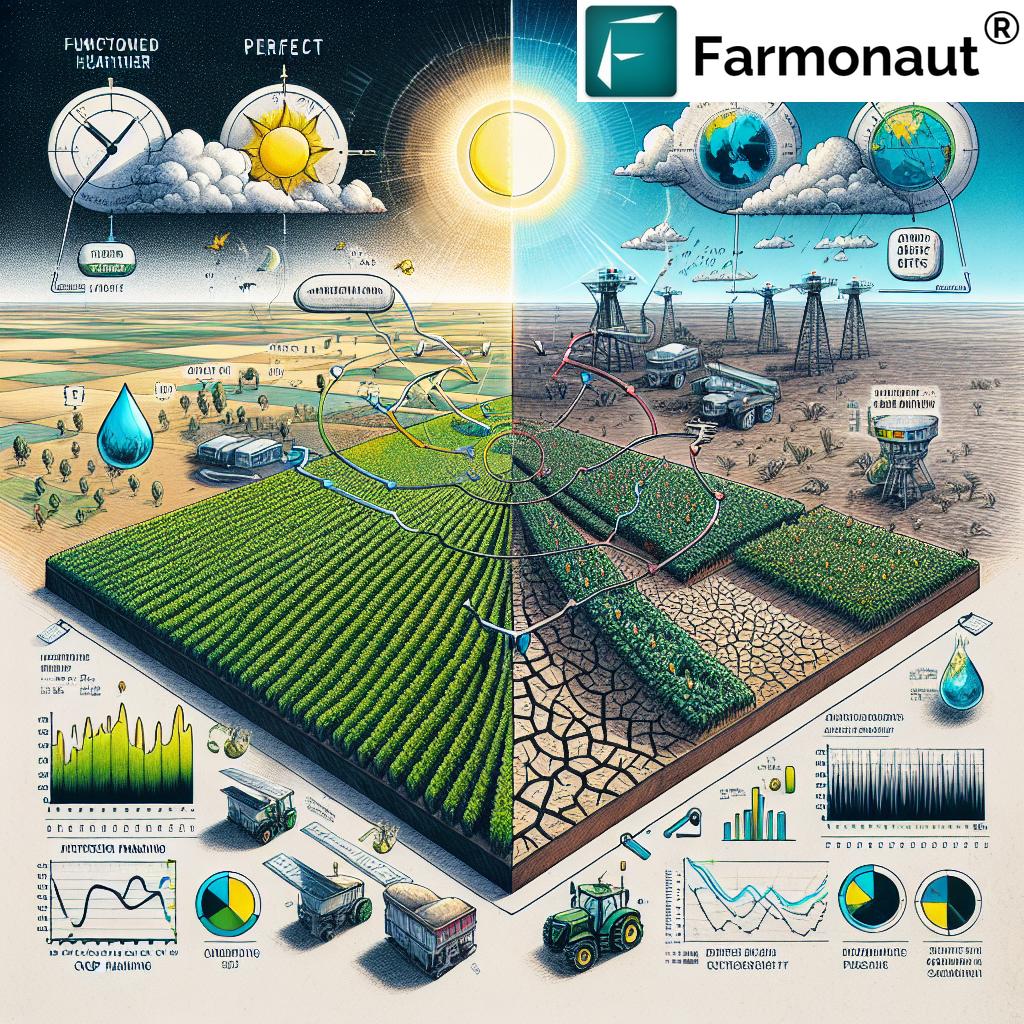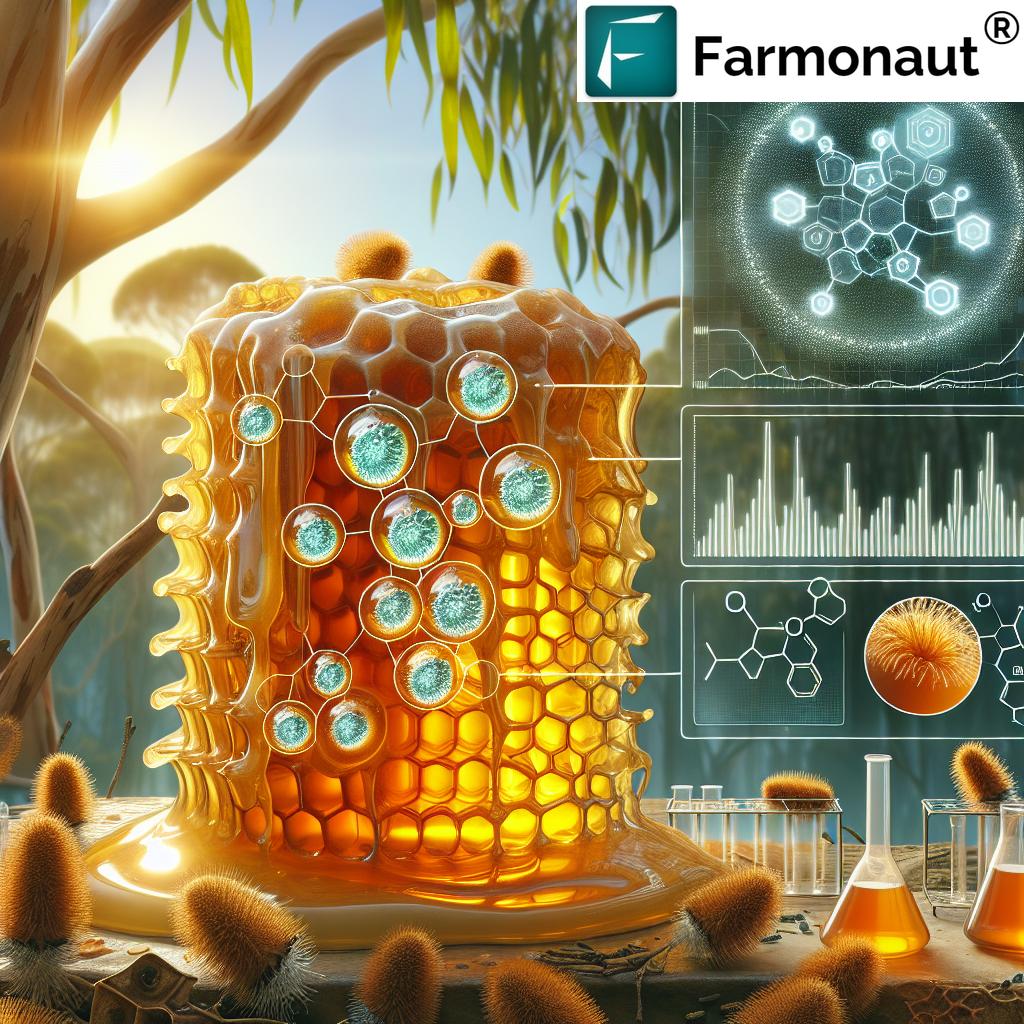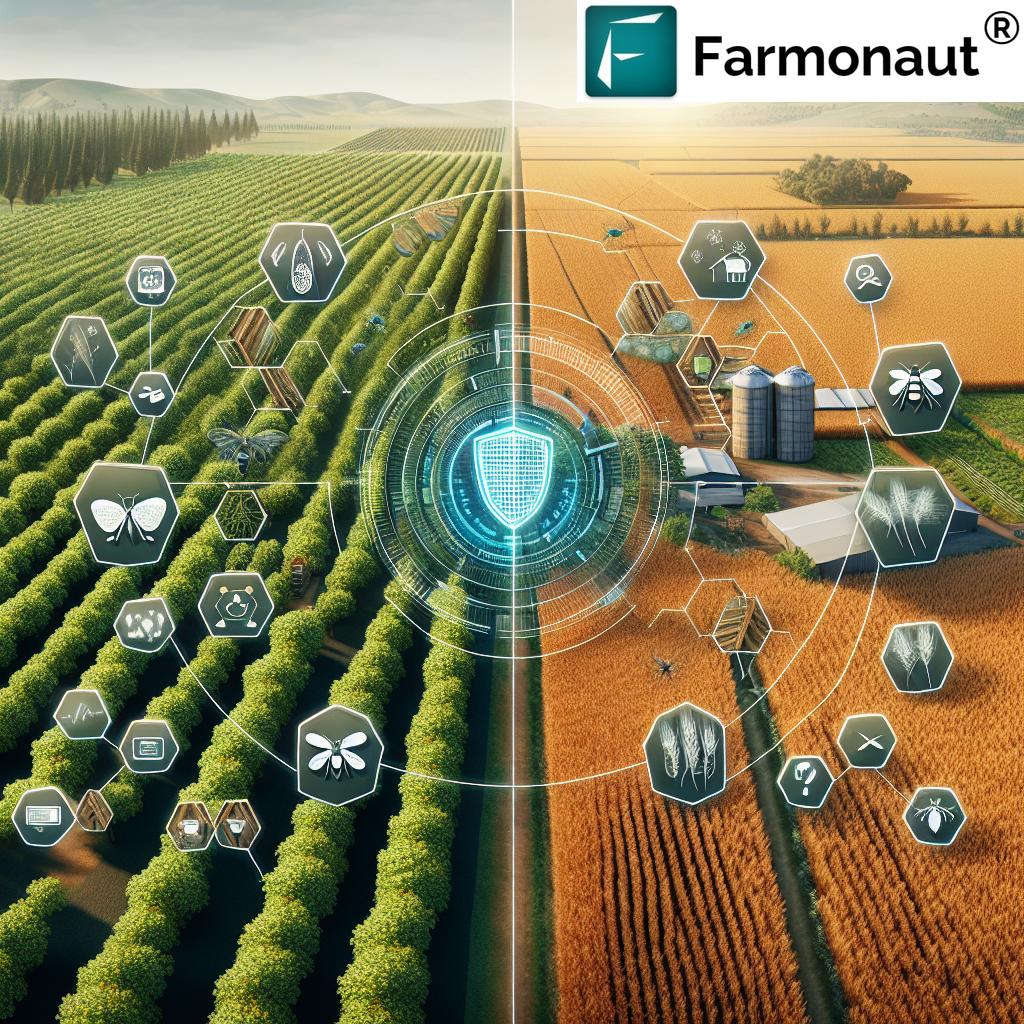Sustainable Almond Farming in NSW’s Riverina: Balancing Agricultural Productivity and Indigenous Heritage
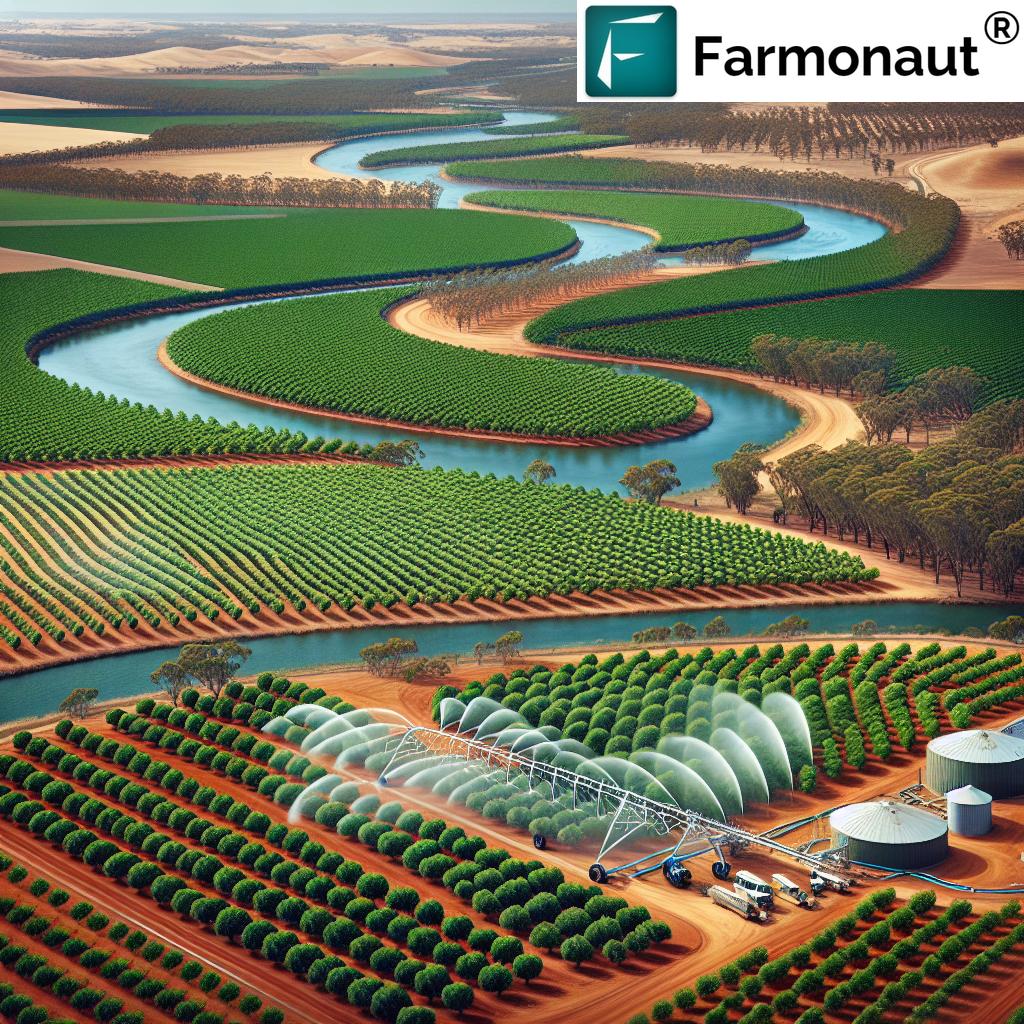
“A 600-hectare almond orchard in NSW’s Riverina region demonstrates sustainable farming practices while preserving Aboriginal heritage sites.”
Welcome to the heart of New South Wales’ Riverina region, where sustainable almond farming is redefining the balance between agricultural productivity and indigenous heritage preservation. In this comprehensive exploration, we’ll delve into the innovative practices employed on a thriving 600-hectare almond orchard near Hillston, NSW. This remarkable property not only showcases cutting-edge agricultural techniques but also stands as a testament to the harmonious coexistence of modern farming and ecological conservation.
As we journey through this insightful blog, we’ll uncover how crop diversification strategies and advanced irrigation practices are revolutionizing almond production in the region. But our story doesn’t end with agricultural innovation. We’ll also explore the profound cultural significance of this land, particularly the evidence of Aboriginal heritage along the picturesque Willandra Creek.
Join us as we unravel the delicate balance between productivity and preservation, from the transformation of cotton fields to lush almond groves, to the conservation of historical fish traps and ancient stone tools. This property exemplifies the future of Australian agriculture – one that honors its past while embracing sustainable practices for a thriving future.
The Riverina: A Hub of Agricultural Innovation
The Riverina region, nestled in the heart of New South Wales, has long been recognized as one of Australia’s most productive agricultural areas. Known for its fertile soils, favorable climate, and access to water resources, the Riverina has been a cornerstone of the nation’s food and fiber production for generations. In recent years, however, the region has been at the forefront of a new agricultural revolution – one that prioritizes sustainability, innovation, and respect for indigenous heritage.
At the center of this transformation is a 600-hectare property near Hillston, which has become a shining example of sustainable almond farming. This orchard represents a significant shift in the region’s agricultural landscape, moving from traditional crops like cotton to the more water-efficient and lucrative almond production.
From Cotton Fields to Almond Groves: A Sustainable Transition
- Historical context: The Riverina’s transition from cotton to almonds
- Economic drivers behind the shift to almond production
- Environmental benefits of almond cultivation in the region
The transition from cotton to almonds in the Riverina is not just a change in crop type; it’s a paradigm shift in agricultural property management. Almond trees, with their deep root systems and perennial nature, offer several advantages over annual crops like cotton:
- Improved soil health and reduced erosion
- Lower water requirements once established
- Enhanced biodiversity in the orchard ecosystem
- Potential for carbon sequestration
This strategic shift aligns perfectly with the growing global demand for almonds and the need for more sustainable farming practices in Australia’s agricultural sector.
Innovative Crop Diversification Strategies
The 600-hectare almond orchard near Hillston is not just a monoculture of almond trees. Instead, it represents a carefully planned system of crop diversification that enhances both productivity and environmental sustainability. Let’s explore some of the key strategies employed on this property:
1. Intercropping with Nitrogen-Fixing Plants
Between rows of almond trees, farmers have introduced nitrogen-fixing cover crops such as clover and vetch. These plants serve multiple purposes:
- Naturally enrich the soil with nitrogen, reducing the need for synthetic fertilizers
- Improve soil structure and water retention
- Provide habitat for beneficial insects, promoting natural pest control
- Prevent soil erosion and reduce dust during windy periods
2. Rotational Grazing Systems
In areas adjacent to the almond orchard, rotational grazing systems have been implemented. This practice involves:
- Carefully managed livestock grazing to maintain grassland health
- Improved nutrient cycling through manure distribution
- Enhanced biodiversity in pasture areas
- Additional income stream for the property
3. Native Vegetation Corridors
Strategic planting of native vegetation corridors throughout the property serves multiple purposes:
- Creates windbreaks to protect almond trees from strong winds
- Provides habitat for native wildlife and pollinators
- Enhances the aesthetic value of the agricultural landscape
- Contributes to the property’s overall carbon sequestration efforts
These diversification strategies not only enhance the resilience of the almond orchard but also contribute to the overall ecological health of the property. By creating a more complex and interconnected agricultural system, the farm becomes less vulnerable to pests, diseases, and environmental stressors.
Sustainable Irrigation Practices in Almond Farming
Water management is a critical aspect of sustainable almond farming, especially in the semi-arid climate of the Riverina region. The 600-hectare orchard near Hillston has implemented state-of-the-art irrigation systems that maximize water efficiency while ensuring optimal crop growth. Here’s how they’re achieving this balance:
1. Precision Drip Irrigation
The orchard utilizes a sophisticated drip irrigation system that delivers water directly to the root zone of each almond tree. This method offers several advantages:
- Minimizes water loss through evaporation and runoff
- Allows for precise control of water delivery based on tree needs
- Reduces weed growth by limiting water availability between rows
- Enables efficient delivery of nutrients through fertigation
2. Soil Moisture Monitoring
Advanced soil moisture sensors are strategically placed throughout the orchard to provide real-time data on soil water content. This information allows farmers to:
- Make informed decisions about irrigation timing and volume
- Avoid over-watering, which can lead to nutrient leaching and root diseases
- Optimize water use efficiency by matching irrigation to crop demand
3. Weather-Based Irrigation Scheduling
The farm employs a weather station and advanced software to adjust irrigation schedules based on local climate conditions. This system takes into account:
- Evapotranspiration rates
- Rainfall patterns
- Temperature and humidity levels
- Wind speed and direction
By integrating this data, the irrigation system can automatically adjust water delivery to match the trees’ actual needs, further improving water use efficiency.
“The Riverina property protects endangered Sandhill Pine Woodland, balancing agricultural productivity with ecological conservation efforts.”
Preserving Aboriginal Heritage: A Commitment to Cultural Respect
While the 600-hectare property near Hillston is a marvel of modern agricultural innovation, it’s also a site of profound cultural significance. The land along Willandra Creek bears testament to thousands of years of Aboriginal history and culture. Recognizing the importance of this heritage, the property managers have implemented a range of measures to protect and honor these cultural sites.
1. Identification and Mapping of Cultural Sites
In collaboration with local Aboriginal elders and archaeologists, the property has undergone extensive surveying to identify and map cultural sites. This process has revealed:
- Ancient fish traps along Willandra Creek
- Stone tool manufacturing sites
- Scar trees, where bark was removed for canoe-making
- Potential burial grounds and ceremonial sites
2. Protection Zones and Buffer Areas
Once identified, these cultural sites are afforded special protection:
- Establishment of no-go zones for agricultural activities
- Creation of buffer areas to prevent indirect impacts
- Installation of protective fencing where appropriate
- Signage to educate workers and visitors about the significance of these areas
3. Ongoing Consultation with Indigenous Communities
The property managers maintain an open dialogue with local Aboriginal communities, ensuring that:
- Cultural knowledge is respected and incorporated into land management practices
- Indigenous perspectives are considered in decision-making processes
- Opportunities for cultural education and employment are provided
This commitment to preserving Aboriginal heritage goes beyond legal requirements; it represents a genuine effort to reconcile modern agricultural practices with the land’s ancient cultural significance.
Ecological Conservation: Protecting Sandhill Pine Woodland
One of the most remarkable aspects of this Riverina property is its dedication to preserving the endangered Sandhill Pine Woodland ecosystem. This unique habitat, once widespread across the region, has been significantly reduced due to land clearing and agricultural expansion. The property’s efforts to protect and restore this ecosystem demonstrate a strong commitment to environmental stewardship.
Key Conservation Measures:
- Habitat Mapping: Detailed surveys to identify remaining Sandhill Pine Woodland areas
- Protection Zones: Establishment of dedicated conservation areas within the property
- Restoration Projects: Active replanting and regeneration of native species
- Pest Management: Control of feral animals and invasive plant species
- Monitoring Programs: Ongoing assessment of ecosystem health and biodiversity
These conservation efforts not only protect a threatened ecosystem but also provide valuable ecosystem services to the almond orchard, such as improved pollination and natural pest control.
Leveraging Technology for Sustainable Farming
In the quest for sustainable almond farming, technology plays a crucial role. The Riverina property employs a range of cutting-edge tools and techniques to optimize production while minimizing environmental impact. One such technology that has proven invaluable is Farmonaut’s satellite-based farm management solution.
Farmonaut’s platform offers real-time crop health monitoring, allowing farmers to:
- Track vegetation health using NDVI (Normalized Difference Vegetation Index)
- Monitor soil moisture levels across the orchard
- Identify potential pest or disease outbreaks early
- Optimize irrigation and fertilizer application
By leveraging these advanced technologies, the almond orchard can achieve higher yields while reducing resource usage and environmental impact.
The Future of Sustainable Almond Farming in the Riverina
As we look to the future, the 600-hectare almond orchard near Hillston serves as a model for sustainable agriculture in the Riverina region and beyond. By balancing agricultural productivity with ecological conservation and cultural preservation, this property demonstrates that it’s possible to meet growing food demands while respecting the land’s natural and cultural heritage.
Key Takeaways:
- Crop diversification and innovative irrigation practices are key to sustainable almond production
- Preserving Aboriginal heritage sites adds cultural value and promotes reconciliation
- Conservation of endangered ecosystems like Sandhill Pine Woodland is crucial for biodiversity
- Technology, such as Farmonaut’s satellite-based solutions, plays a vital role in optimizing farm management
- Balancing productivity and preservation is not only possible but essential for the future of agriculture
As we continue to face challenges such as climate change and increasing food demand, properties like this serve as beacons of hope, showing that sustainable farming practices can lead to a more resilient and productive agricultural sector.
For more information on how satellite technology can support sustainable farming practices, visit Farmonaut’s API or check out their API Developer Docs.
Sustainable Almond Farming Practices in Riverina
| Farming Practice | Benefits | Environmental Impact |
|---|---|---|
| Crop Diversification | Improved soil health, reduced pest pressure, additional income streams | Increased biodiversity, reduced chemical use, enhanced ecosystem resilience |
| Innovative Irrigation Techniques | Optimized water use, precise nutrient delivery, improved crop yield | Reduced water waste, minimized runoff, conservation of water resources |
| Aboriginal Heritage Preservation | Cultural respect, community engagement, historical conservation | Protection of significant sites, maintenance of traditional ecological knowledge |
| Sandhill Pine Woodland Conservation | Habitat protection, enhanced biodiversity, natural pest control | Preservation of endangered ecosystem, carbon sequestration, wildlife conservation |
| Water Management | Efficient resource use, drought resilience, cost savings | Sustainable water use, protection of aquatic ecosystems, reduced strain on local water sources |
FAQs about Sustainable Almond Farming in the Riverina
- Q: How does almond farming compare to traditional cotton farming in terms of water usage?
A: Almond trees, once established, generally require less water than cotton crops. The deep root systems of almond trees allow for more efficient water uptake, and modern irrigation techniques like drip systems further reduce water consumption. - Q: What role do Aboriginal communities play in the management of cultural sites on the property?
A: Aboriginal communities are actively consulted in the identification, protection, and management of cultural sites. Their traditional knowledge informs conservation practices and land management decisions. - Q: How does the property balance almond production with the conservation of Sandhill Pine Woodland?
A: The property has designated specific areas for conservation, creating buffer zones between productive almond orchards and protected woodland areas. This approach allows for both agricultural production and ecosystem preservation. - Q: What technologies are used to monitor crop health in the almond orchard?
A: The property utilizes satellite-based monitoring systems, such as Farmonaut’s platform, to track vegetation health, soil moisture, and potential pest issues. This technology allows for precise and timely interventions. - Q: How does sustainable almond farming contribute to the local economy of the Riverina region?
A: Sustainable almond farming provides stable employment opportunities, supports local businesses through supply chain relationships, and contributes to the region’s reputation as a producer of high-quality, sustainably grown almonds.
Conclusion: A Model for Sustainable Agriculture
The 600-hectare almond orchard near Hillston, NSW, stands as a shining example of how modern agriculture can coexist with ecological conservation and cultural preservation. By implementing innovative farming practices, embracing cutting-edge technology, and maintaining a deep respect for the land’s heritage, this property is paving the way for a more sustainable future in the Riverina region and beyond.
As we face the challenges of climate change, increasing food demand, and the need for environmental stewardship, properties like this offer valuable lessons and inspiration. They demonstrate that with careful planning, technological innovation, and a commitment to sustainability, it’s possible to achieve agricultural productivity while honoring the land’s ecological and cultural significance.
The journey towards sustainable almond farming in the Riverina is ongoing, but the progress made on this property provides hope and direction for the future of agriculture in Australia and around the world.








